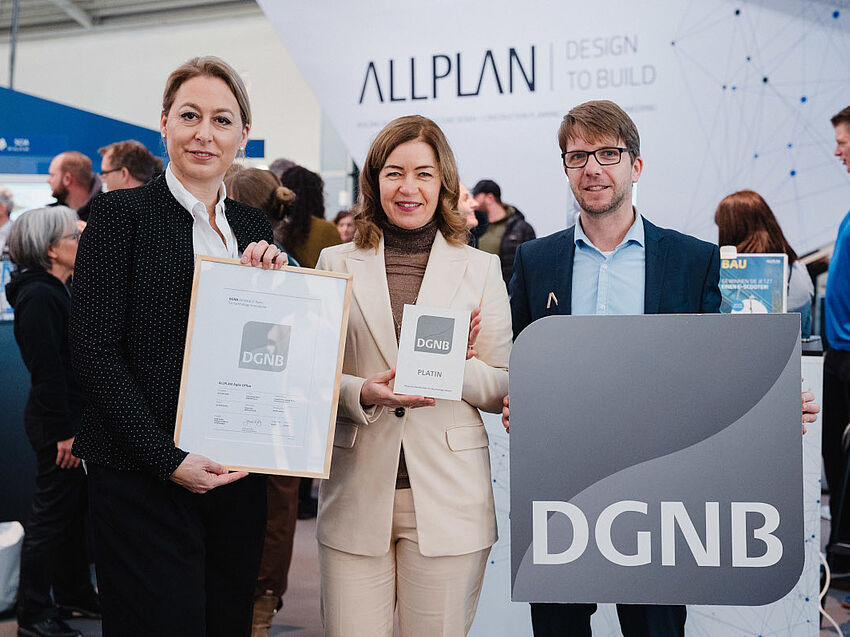The United Nations’ (UN) Department of Economic and Social Affairs has published 17 Sustainable Development Goals as a blueprint to help address global challenges such as hunger, poverty, and climate change. While these issues affect everyone differently, by working together these issues can be overcome for the benefit of all. The construction industry is a key player in achieving the UN’s Sustainable Development Goals1. In fact, the Nemetschek Group – which ALLPLAN is a brand of – has been selected as one of the UN’s 50 Sustainability and Climate Leaders for their promotion of using digital solutions to eliminate inefficiencies and reduce waste throughout the design, construction, and operation process. With the right tools, sustainability can be achieved through improved productivity, as well as reduced delays and material wastage – the only way to make the planet’s finite resources stretch further. Here is how the architecture, engineering, construction, and operation (AECO) industry can contribute to these goals.
Build Resilient Infrastructure, Promote Sustainable Industrialization, and Foster Innovation
Economic growth, social development, and climate action are heavily dependent upon investments in infrastructure. This includes roads and bridges, information and communication technologies, sanitation services, and utilities infrastructure – the basic needs of every country. The UN states that failing to invest in or improve these services and promote technological innovation could translate into poor healthcare, inadequate sanitation, and limited access to education. In addition, infrastructure plays a key role in driving economic growth as it provides the facilities people need to go about their daily lives.

However, it is not just about building more infrastructure – what gets built must be resilient enough to withstand various events, and not all of them physical. For example, the 2008 global financial crisis placed as large a burden on existing infrastructure facilities as an earthquake or other natural disaster. The current COVID-19 pandemic has also highlighted severe insufficiencies with many healthcare systems worldwide. Infrastructure must therefore not just be built to sufficient quality standards but also with adequate capacity to withstand a range of events, all while achieving project cost targets.
Sustainable Cities and Communities
The UN projects that 60% of the population will be living in cities by 2030, which in turn will significantly increase the carbon emissions and resource usage of these areas. In addition, this puts a higher burden on the existing infrastructure services, such as roads, utilities, and healthcare facilities. Due to the high population density of these areas, they are also more vulnerable to natural disasters and climate change, so resilient and sustainable urban buildings and infrastructure are crucial for safety and an improved quality of life for residents.
The AECO industry has a role to play here not just in terms of building sustainable assets, but also in ensuring that they can be operated efficiently and re-used at the end of their lifespan. Moving to digital solutions for the design, construction, and operation of buildings and infrastructure is essential in order to deliver on these aims.
Sustainability in Construction Through Digitalization
Achieving these goals can be made possible by finding additional efficiencies within the design, construction, and operation processes. Using Building Information Modeling (BIM) and advanced 3D modeling software is one way to improve productivity, reduce errors, and therefore reduce wasted time, materials, and money. ALLPLAN 3D BIM modeling software has a range of tools and features that help architects, civil engineers, and contractors collaborate more effectively and work more efficiently. The extra time this creates means that project teams can design innovative, optimized solutions for a range of scenarios or using different methods and materials. The result is higher quality, sustainable infrastructure that can cope with the demands placed upon it.
BIM and 3D modeling software like ALLPLAN can not only ensure that a building is visualized and thoroughly planned for the efficient operation and demolition of an asset, but the model can also be used for facilities management upon completion. Incorporating technologies such as internet-enabled sensors into buildings and infrastructure can provide real-time asset information for optimized and informed operation. With this data, efficiencies such as reduced energy usage can be achieved, for example – a key aspect of ensuring more sustainable cities.
The AECO industry has the opportunity to play a significant role in ensuring sustainable development, and digitalization holds the key to unlocking this.
Further information:
1 https://www.un.org/sustainabledevelopment/(The content of this publication/article has not been approved by the United Nations and does not reflect the views of the United Nations or its officials or Member States.)




